
Speaker Biographies
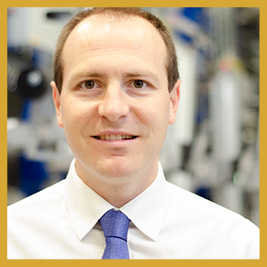
Professor Sir Ian Chapman
CEO, UK Atomic Energy Authority
Opening Ceremony
Sir Ian Chapman became CEO of the UK Atomic Energy Authority in October 2016.
He has held a number of international roles in fusion, currently including membership of the Princeton Plasma Physics Advisory board and chairing the IAEA International Fusion Research Committee.
His research has been recognised with a number of international awards, including the Institute of Physics Paterson Medal in 2013, the American Physical Society Stix Award in 2017, the Royal Society Kavli Medal in 2019 and the Institute of Physics Glazebrook Medal for leadership in 2021. He was made a Fellow of the Institute of Physics in 2013, became a visiting Professor at Durham University in 2015, elected as a Fellow of the Royal Academy of Engineering in 2022 and made an Honorary Fellow of the Nuclear Institute in 2023.
He was knighted in the King’s New Year’s Honours in 2023.
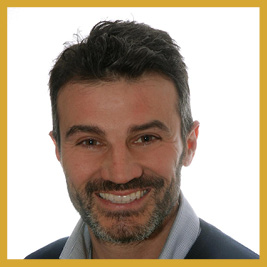
Piero Agostinetti
Researcher, Consorzio RFX
Paper title: Innovative concepts in the DTT Neutral Beam Injector
Piero Agostinetti received his Master’s Degree in mechanical engineering and his PhD in Energetics from the University of Padova, Padua, Italy.
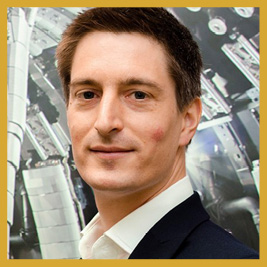
Thomas Barrett
Fusion Engineering Unit head, UK Atomic Energy Authority
Paper title: CHIMERA Facility Overview, Construction Status and Challenges Overcome
Tom Barrett has been working at the UK Atomic Energy Authority since 2007, notably leading the upgrade of neutral beam injection systems for the Mega-Amp Spherical Tokamak (MAST) facility and leading research on the fusion reactor divertor and other high-heat flux plasma-facing technologies for the EU DEMO concept. He is now head of the Fusion Engineering Unit at UKAEA. He is the Technical Programme Lead for a new facility for testing fusion technology named CHIMERA, under construction at a new UKAEA site in South Yorkshire, UK. He is a Chartered Engineer and a member of the UK Institution of Mechanical Engineers. His research interests are integrated fusion reactor design, fusion in-vessel components, fusion plasma-facing components, fusion magnets, and digital engineering.
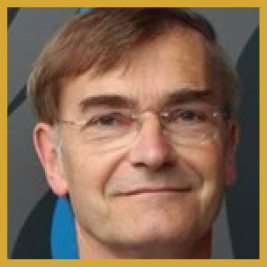
Hans-Stephan Bosch
Head of Operation W7-X, Max.Planck-Instut für Plasmaphysik
Paper title: Wendelstein 7-X in the steady-state regime, Assembly, Commissioning and Operation
Hans-Stephan Bosch has studied physics in Münster and Munich. He received the Dr. rer. nat. degree from the Technical University, Munich, in 1986, and the Habilitation degree from Humboldt University, Berlin, Germany, in 2000. In August 2016 he was appointed as a professor at TU Berlin.
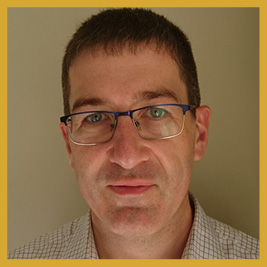
Sam Davis
JT-60SA, Fusion for Energy
Paper title: Current status of JT-60SA operation and future upgrade
After starting his career in fusion engineering at UKAEA, Sam moved to F4E, Garching in 2010 to join the JT-60SA team working on many different tokamak systems. Since 2020 he has been on site in Naka, Japan to support the integrated commissioning of JT-60SA.
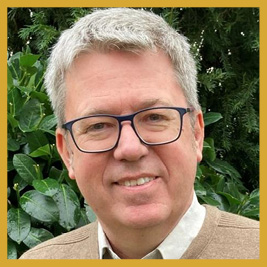
Christian Day
Project Leader Tritium, Matter Injection and Vacuum Technologies,
Karlsruhe Institute of Technology (KIT)
Paper title: Progress in maturation of critical technologies for the EU DEMO fuel cycle
Since the start of EUROfusion, Chris Day, PhD in Chemical Engineering, is leading the tritium, matter injection and vacuum work package within the European DEMO programme. At Karlsruhe Institute of Technology he is Head of the Vacuum and Fuel Cycle Technology Department at the Institute of Technical Physics. In 2014 he was awarded the European Prize for Innovation in Fusion Research for his pioneering work on the Direct Internal Recycling concept of the fuel cycle. His research interests do further cover rarefied gas dynamics, divertor particle exhaust modelling, and large vacuum systems in general. Besides DEMO, he is currently also strongly involved in the development of the JT-60SA, W7-X and DTT divertor pumping systems.
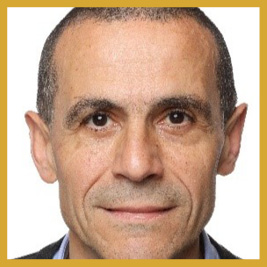
Gianfranco Federici
Head of Department, EUROfusion
Paper title: Status and prospects for fusion developments in Europe
Gianfranco is currently Head of the Fusion Technology Department and of the DEMO Central Team in the EUROfusion Consortium (on assignment from Fusion for Energy). He is responsible for the coordination and technical oversight of the Design and R&D efforts in Europe aimed to the conceptual design of a DEMOnstration Fusion Power Plant (DEMO).
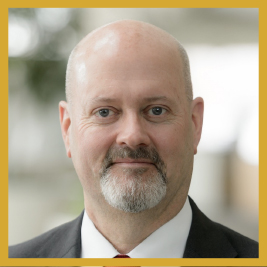
Dr. Michael Ford
Associate Laboratory Director for Engineering at the Princeton Plasma Physics Laboratory (PPPL)
Paper title: Summary from Nonproliferation Workshop
Dr. Michael Ford is the Associate Laboratory Director for Engineering at the Princeton Plasma Physics Laboratory (PPPL) and is also an affiliated Research Scholar at the Andlinger Center for Energy and the Environment, Princeton University. Dr. Ford leads the pursuit of PPPL’s mission to develop advanced fusion engineering knowledge and techniques and is responsible for all engineering support throughout the Laboratory. His efforts include leadership of fusion technology research that will further the development of fusion pilot plants with a focus on optimizing designs for commercial fusion systems. Supported research spans diverse areas such as HTS magnets, fusion diagnostics, and the development of digital engineering tools. He also leads Lab efforts in nonproliferation and probabilistic risk assessment for fusion. Dr. Ford remains active in fission research and is a member of the Nuclear Energy Advisory Committee supporting the Department of Energy Office of Nuclear Energy. He served a full career as a nuclear trained US Navy Officer and earned his PhD in Engineering at Carnegie Mellon University (CMU). He conducted postdoctoral research at Harvard University.
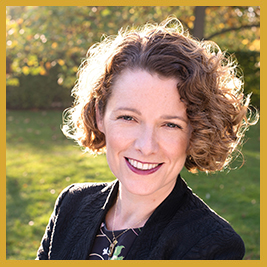
Kirsty Gogan
Founding Director and Co-CEO, TerraPraxis and Co-founder and Managing Director, LucidCatalyst
Paper title: Developing a fast, low-cost, and repeatable system to decarbonise the global coal fleet with fission and fusion by 2050
Kirsty Gogan is co-founder and managing director of consulting firm, LucidCatalyst, and climate-focused non-profit, TerraPraxis. Both organizations focus on enabling high-impact rapid transitions for neglected parts of the decarbonization challenge. The TerraPraxis team works with an extensive global network to define, incubate, and initiate scalable strategies that fulfill the twin missions of prosperity and decarbonization. Through a combination of rigorous, credible analysis, relationships of trust, and values alignment with key influencers, TerraPraxis maps transformative solutions into the uncharted territory of decarbonization that are otherwise absent from the discourse. Kirsty is a member of the UK Government’s Nuclear Innovation Research and Advisory Board (NIRAB). She serves on the Board of Nuclear Innovation Alliance, as well as Voices for Nuclear. The US National Academies of Sciences, Engineering, and Medicine has appointed her to serve on a new committee to identify opportunities and barriers to the commercialization of new and advanced nuclear energy technologies over the next 30 years.
TerraPraxis is leading an international team developing a solution to repower coal fleets worldwide by 2050. The organization is also disseminating the report – Missing Link to a Livable Climate: how hydrogen enabled synthetic fuels can help deliver the Paris Goals. Kirsty also co-authored LucidCatalyst’s other widely cited commissioned reports, including Energy Technologies Institute Nuclear Cost Drivers Study and by ARPA-E to conduct a study on Cost and Performance Requirements for Flexible Advanced Nuclear Plants in Future U.S. Power Markets.
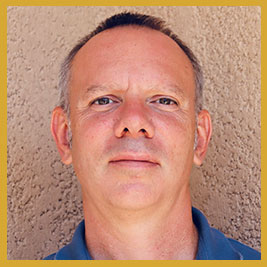
Magnus Gohran
ITER
Paper title: ITER Hot Cell Facility and Remote Handling
Magnus Gohran is a Swedish engineer and Project Manager with experience from design and construction of Hot Cells, Remote Handling Systems and Radiological Waste processing systems. He currently has the position as acting Division Head for the ITER Hot Cell Facility Division with the responsibility to manage the design and construction of the ITER Hot Cell and the Tokamak Remote Handling systems. Prior to the position at ITER, Magnus held a similar position at the European Spallation Source ERIC, in the south of Sweden, managing the design and construction of its Hot Cell and shielded transport flasks.
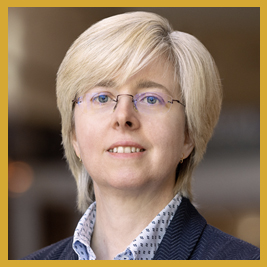
Sehila M. Gonzalez de Vicente
Global Director of the Fusion Energy programme, Clean Air Task Force
Paper title: Overview on Safety Regulation for Fusion
Sehila M. Gonzalez de Vicente holds a PhD in in Materials Physics by Univ. Complutense de Madrid (Spain) and a MBA by the EOI Business School as well. She has 20 years of experience in fusion technologies and materials. She is currently the Global Director of the Fusion Energy programme at Clean Air Task Force. Previously she was working at the International Atomic Energy Agency as Nuclear Fusion Physicist for more than 8 years. Before joining IAEA, she was the Responsible officer of the Fusion Materials development programme at EFDA (European Fusion Development Agreement) / Eurofusion, in Garching bei Munchen (Germany). In addition, she was appointed European Technical Coordinator of the International Fusion Energy Research Centre (IFERC) project between Europe and Japan as well as member of the Karlsruhe Institute of Technology (KIT) scientific advisory board in the research field of Energy. She has been chair of the 9th Annual Assessment of Fusion for Energy, member of the UK’s Fusion Technical Advisory Group, member of the Review Committee for the European Spallation Source Re-baseline Review as well as member of the IFMIF-DONES España Technical Advisory Committee. She is also the Chair of the Women in Fusion Group.
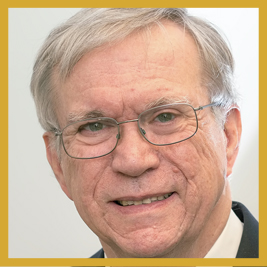
Richard Hawryluk
DEMO Panel Member
In 2022, Dr. Richard (Rich) Hawryluk joined the Department of Energy as Senior Technical Advisor in the Office of the Deputy Director for Science Programs. Prior to that he held leadership roles at the Princeton Plasma Physics Laboratory. From 1991 to 1997, he headed the Tokamak Fusion Test Reactor and led the deuterium-tritium experiments. He was Deputy Director of the Laboratory from 1997 to 2008. From 2011 to 2013, he served as Deputy Director General for the Administration Department of ITER. He also chaired the National Academy of Science, Engineering and Medicine report on “Bringing Fusion to the U.S. Grid.”
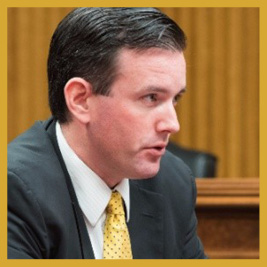
Andrew Holland
CEO, Fusion Industry Association
Paper title: The Global Fusion Industry in 2023 – An overview of the plans, timelines, and investment in commercial fusion
Andrew Holland is the CEO of the Fusion Industry Association. Based in Washington, Holland has worked at the intersections of science, energy, policy, and politics for two decades. At the FIA, he advocates for the emerging private fusion industry before Congress, the White House, regulators, international bodies, and governments around the world.
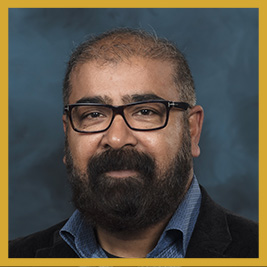
Aftab Hussain
Senior Design Engineer, Oak Ridge National Laboratory
Paper title: Engineering Challenges of Material Plasma Exposure eXperiment (MPEX) Steady-State High Heat Flux Components
Aftab Hussain received a Master’s Degree in Mechanical Engineering from The City College of New York, CUNY, USA in 2004 and a Master’s Degree in Manufacturing Engineering from NYU, USA in 2012. He has worked at the National Synchrotron Light Source 2 (NSLS-II) project at Brookhaven National Laboratory (BNL), USA for almost 6 years leading the technical design efforts of two diagnostics beamlines and six Frontends. He worked at Facility for Rare Isotopes Beams (FRIB) at Michigan State University (MSU), USA as a Project Engineer and Installation Department Manager for almost 6 years leading the technical design and installation efforts of many accelerator and experimental systems. He is currently working as a Lead Engineer for the Material Plasma Exposure Experiment (MPEX) project at Oak Ridge National Laboratory (ORNL), USA.
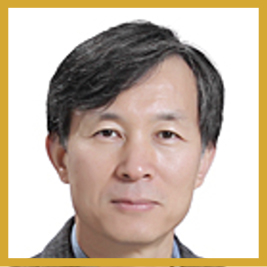
Dr. Suk Jae YOO
DEMO Panel Member
Dr. Suk Jae YOO received the Ph.D. degree in the field of Plasma Spectroscopic Diagnostics from the Karlsruhe Institute of Technology (KIT), Karlsruhe, Germany, in 1997 and his bachelor’s (1987) and master’s (1989) from Seoul National University, Seoul, Korea. He is currently the President of Korea Institute of Fusion Energy (KFE). He also served as the President of National Fusion Research Institute (NFRI) from 2018 to 2020 which was promoted to the KFE in 2020.

Santori Kinoshi-san
Kyoto Fusioneering
Paper title: Overview of UNITY blanket testing station
Biography Awaited
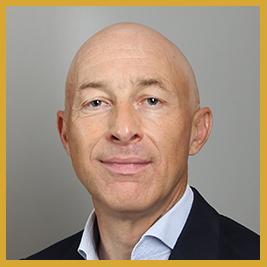
Ingo Kuehn
Engineer, ITER
Paper title: Status of Plant Construction in ITER Tokamak Complex Buildings
Ingo Kuehn has studied civil- & structural engineering at the University of Karlsruhe and at the Rheinisch- Westfaelische Technische Hochschule (RWTH) in Aachen, Germany and graduated with a Dipl.-Ing.. He is further certified as Project Management Professional (PMP®).
He joined the ITER Project in 2000 with various positions related to plant systems design integration such as Area Manager for Tokamak Complex buildings. He is currently the Facility Responsible Officer (Chef d‘Installation) for the Tokamak building and Joint Integration Team leader for delivery of the Engineering Work Packages to launch construction on the ITER Worksite.
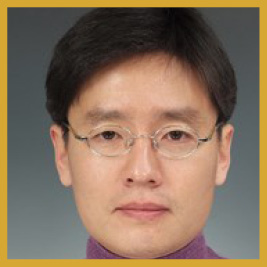
Jae-Min Kwon
Principal Researcher, Korea Institute of Fusion Energy
Paper title: Development of Virtual KSTAR and Digital Twin Technologies for Fusion
Jae-Min Kwon received his PhD from KAIST, Korea (2003). Since joining KFE, he has been working as a senior research staff (2008-2012), and a principal research staff (2012-present). His main research interests cover fusion simulation and virtualization as the task force leader of transport and confinement.
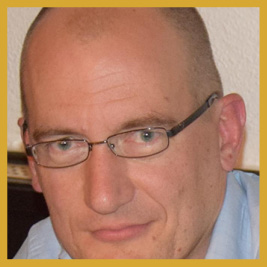
Diego Marcuzzi
Head of NBTF Engineering, Consorzio RFX
Paper title: Present status of SPIDER upgrades
Diego Marcuzzi received his Masters Degree in Mechanical Engineering in 1994, at Padova University, Italy.
since 2000 he has been working at Consorzio RFX, Padova, Italy. He was first involved in the modification of RFX fusion machine, then in several international projects. Since 2004, he has been contributing to the development of the ITER Neutral Beam Injector, and he is part of the team coordinating the Neutral Beam Test Facility (NBTF) hosted in Padova. He is the project leader of the beam source of the two NB experiments in the facility. Currently, he is the Head of Engineering for the NBTF organization.
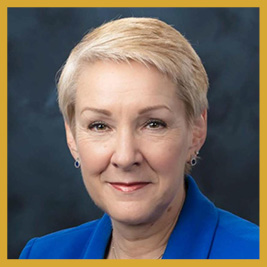
Kathryn McCarthy
US ITER Project Director, Oak Ridge National Laboratory
Paper title: Update on ITER achievements, challenges, and path to operations
Dr Kathryn McCarthy joined the Oak Ridge National Laboratory as Director of the US ITER Project after three years as Vice President for Science and Technology for the Canadian Nuclear Laboratories. She previously held a variety of engineering and leadership roles at Idaho National Laboratory. McCarthy earned her PhD from the University of California, Los Angeles. She was inducted into the National Academy of Engineering in 2019. Her awards include a 2022 Fusion Power Associates Leadership Award, the 1996 ITER US Home Team Leadership Award, and the 1994 David Rose Award for Excellence in Fusion Engineering. McCarthy has held numerous ANS leadership positions. She was elected as a fellow of ANS in 2021

Paul Methven
Director of STEP, UKAEA
Paper title: Fusion Energy’s Apollo – How STEP plans to stimulate a new industry for a new technology
Paul Methven joined UKAEA as Director of STEP in 2020 after 33 years in the UK Ministry of Defence. His previous appointment was as Director of Submarine Acquisition where he had delivery responsibility for the Astute Class and Dreadnought Class submarine design and build programmes; prior to that he led the Type 26 Global Combat Ship programme, ran submarine refitting and has led performance and risk management for the MOD. He holds Bachelor’s and Master’s Degrees in Marine Engineering, an MBA and is a graduate of the UK’s Major Projects Leadership Academy.
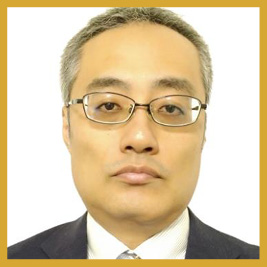
Kenji Morita
Senior Researcher, National Institutes for Quantum Science and Technology
Paper title: Status of Research on Lithium-6 Enrichment and Development of New Technology Using Ionic Conductor
Kenji Morita is a senior researcher at the National Institutes for Quantum Science and Technology (QST). He has been working on extraction and isotope enrichment of lithium from aqueous resources using ionic conductors. His research interests also include numerical simulations of ionic transport in these materials.
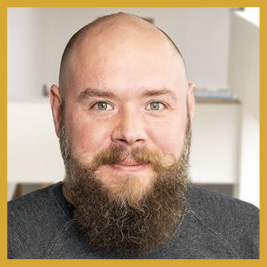
Novimir PablanT
Principal Research Scientist, Princeton Plasma Physics Laboratory
Paper title: Variable-Radii-Spiral Optics for X-Ray Spectroscopy: Dramatically Improved Performance Through Complex Shaping and Advanced Fabrication
Dr Novimir Pablant is currently the head of stellarator experiments at the Princeton Plasma Physics Laboratory. Novimir is a world leading expert in x-ray spectroscopy of high-temperature plasmas, both for magnetic confinement fusion and high energy density physics. His most recent work has been in studying core energy and impurity confinement at the Wendelstein 7-X stellarator, and in developing X-ray diagnostics for W7-X, ITER and the National Ignition Facility. Novimir gained his PhD from the University of California San Diego developing a line-ratio based motional stark effect diagnostic at DIID-D, and his B.S. from University of California Santa Cruz.
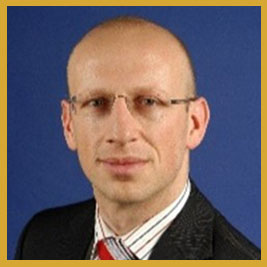
Gerald Pintsuk
Laboratory Head, Forschungszentrum Jülich GmbH
Paper title: Plasma facing materials and related test facilities and requirements for material and component qualification
After getting his PhD at the RWTH Aachen in 2004 and working as Post-Doc at Forschungszentrum Jülich, Pintsuk became the head of the High Temperature Materials Laboratory at Forschungszentrum Jülich in 2012, focusing on characterization of the performance and damage analyses of non-irradiated and irradiated plasma facing materials and components when exposed to high heat fluxes. In 2017, he took over the role of Project Leader for the Work Package Materials covering topics from material design interface via structural, high heat flux and functional material development, characterization, and qualification to irradiation modelling.
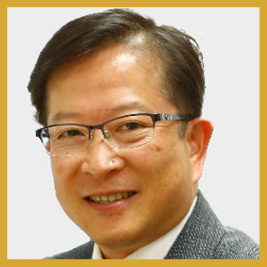
Yoshiteru Sakamoto
Group Leader, National Institutes for Quantum Science and Technology
Paper title: Strategy and progress of JA DEMO development
Yoshiteru Sakamoto is a Group leader of Fusion Reactor Design Group at the National Institute for Quantum Science and Technology (QST) in Japan. He graduated from the Tsukuba University in 1998 with a PhD in Science. He joined the Japan Atomic Energy Research Institute (JAERI) and spent ten years conducting advanced plasma development experiments with JT-60U tokamak. After that, he engaged in DEMO design research and is currently the leader of a joint special design team for fusion DEMO in an industry-academia collaboration.
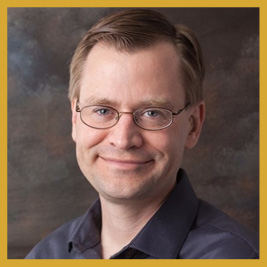
Daniel B Sinars
Director, Sandia National Laboratories
Paper title: From Z to a Next Generation Pulsed Power Facility
Dr Daniel Sinars is the Director for the Pulsed Power Sciences Center, home of the 80-TW, 22 MJ “Z” facility. Daniel also manages the Inertial Confinement Fusion and Assessment Science program work at Sandia. He has made extensive contributions to inertial confinement fusion, high energy density science, and z-pinch physics research, with over 130 refereed journal publications. Daniel has received the IEEE Nuclear and Plasma Sciences Society Early Achievement Award, a Department of Energy Early Career Research Program Award, the Presidential Early Career Award for Scientists and Engineers, and the Ernest Orlando Lawrence Award.
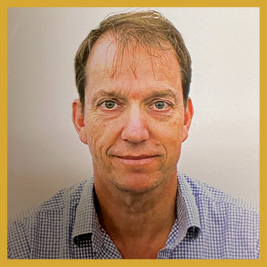
George Sips
Director of DIII-D Operations, General Atomics
Paper title: The DIII-D National Fusion Facility, supporting ITER and the Reactor Path
George Sips graduated in 1987 from the Technical University in Eindhoven, the Netherlands.
He worked at JET from 1988 to 1999, participated in various JET experiments, including DT experiments in 1997. From 2000 to 2008, George continued his work on scenario development at ASDEX Upgrade. He returned to JET in 2009 to prepare a second DT phase, while overseeing requirements for JET operations.
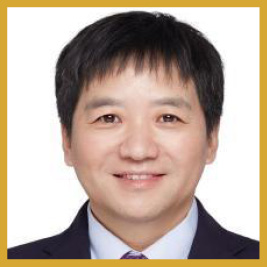
Yuntao Song
Director, Institute of Plasma Physics, Chinese Academy Of Sciences
Paper title: Recent EAST experimental results and CRAFT R&D progress for CFETR in China
Yuntao Song has been the Director of Institute of Plasma Physics, Chinese Academy of Sciences (ASIPP) since 2020. He is now in charge of EAST tokamak project in China. He received his PhD degree from Graduate School of Chinese Academy of Sciences. His research work focuses on the key technology of a tokamak fusion device .He has been involved in many fusion research and R&D projects in China such as CFETR, CRAFT project and so on. He has also been involved in the research work of ITER since 2008.
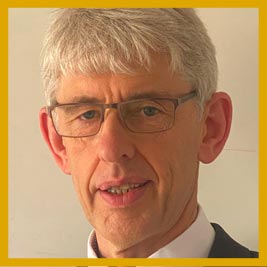
Michael Walsh
Division Head, ITER
Paper title: Engineering Challenges in ITER to realize Diagnostics
Michael Walsh was born in Ireland. He took a degree in Electrical Engineering and Microelectronics from 1982 to 1986 at University College Cork, in Ireland. During this time, as well as the usual engineering topics, he developed an interest in optics and lasers, working initially on Far-Infrared Laser systems. After his degree, he followed his interests in lasers and optics to develop a compact high-power tunable CO2 waveguide laser. His subsequent PhD work mainly took place at the Culham Science Centre Abingdon, Oxfordshire, in the UK. This work was on the study of Ion-Transport in the Magnetic Fusion Device, HBTX-1D, and this involved the development of various diagnostic systems.
After completing the PhD, he continued to work in the Fusion field and especially in the area of diagnostic development.
Before his current position, he worked on START, MAST and JET (Joint European Torus) in the UK and now, he is head of Diagnostics for ITER based in St. Paul Lez Durance in southern France. The objective is to create and implement on ITER all the diagnostics needed for the ITER Research plan according to the schedule
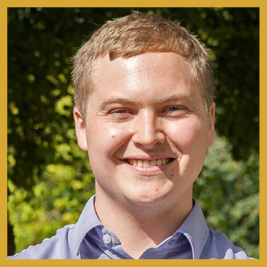
Steven Wray
STEP Product Lead – Power Infrastructure, UKAEA
Paper title: Spherical Tokamak Power Management
Stevie is a chartered engineer and the product development team leader for power infrastructure within the UK flagship Spherical Tokamak for Energy Production (STEP) programme. He holds a Masters in Electrical and Electronic Engineering from the University of Bath. His practical experience spans working on all elements of the magnet power supplies of the Joint European Torus (JET) and its power distribution systems.

Qi Yang
Paper title: Development of High Intensity Steady Neutron Sources HINEG
Biography Awaited
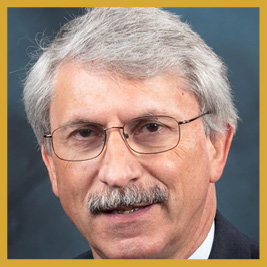
Dennis Youchison
Chief Engineer, Fusionex LLC
Paper title: 40 Years of High Heat Flux Engineering – a Career Perspective
Dennis L Youchison received his PhD degree in Nuclear Engineering from the Pennsylvania State University, University Park, PA in 1989. He is a licensed professional engineer in the state of New Mexico and a senior member of IEEE. His dissertation research at the Westinghouse R&D Center, Pittsburgh, PA, involved development of particle beam systems for testing fusion PFCs. He was a Distinguished Member of the Technical Staff at Sandia National Laboratories from 1994 through 2015 responsible for HHF experiments at the Plasma Materials Test Facility (PMTF). In 2015, Dr Youchison joined Oak Ridge National Laboratory where he served as the founding director of the INFUSE private/public partnerships program until his retirement in 2022. He now consults on fusion PFCs, heat exchangers and hypersonics.
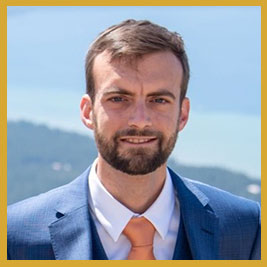
Alex Zylstra
Scientist, Lawrence Livermore National Laboratory
Paper title: Target gain at the National Ignition Facility
Dr. Alex Zylstra is the experimental lead for the ‘Hybrid E’ campaign within the inertial confinement fusion program on NIF. This campaign improved implosion performance from previous records, first surpassing the burning-plasma threshold, Lawson’s criterion for ignition, and most recently the first laboratory experiment to produce target gain with a fusion yield over 3 MJ. He also works on projects related to nuclear astrophysics. Alex started working in inertial fusion as a graduate student at MIT, where he was supported by the Stewardship Science Graduate Fellowship in his work on OMEGA and NIF. After graduating in 2015 he went to Los Alamos National Laboratory as a Reines Distinguished Postdoctoral fellow. In 2018 he both took a position with Lawrence Livermore as the experimental lead for the Hybrid E campaign on NIF and was awarded a DOE Early Career grant for his work on nuclear astrophysics.